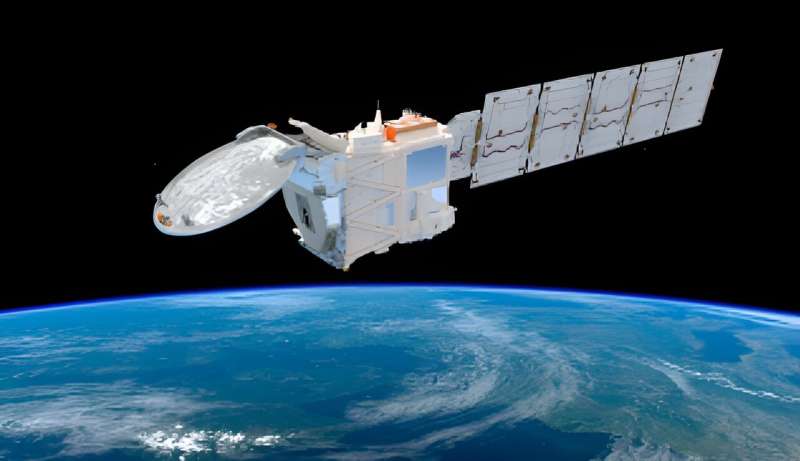This article has been reviewed according to Science X's editorial process and policies. Editors have highlighted the following attributes while ensuring the content's credibility:
fact-checked
trusted source
proofread
Satellite mission to unravel how clouds impact future climate change

A brand new satellite that will revolutionize our understanding of the role clouds and aerosol particles play in climate change is set to launch after more than 30 years of planning.
The EarthCARE satellite is the brainchild of the University of Reading's Professor Anthony Illingworth. Conceived in 1993, the project was adopted by the European Space Agency (ESA) in 2004.
The satellite is set to blast off from California's Vandenberg Space Force Base on board one of Elon Musk's SpaceX rockets, scheduled for launch no earlier than Tuesday 28 May 2024.
The mission is a testament to the power of U.K. and international collaboration and the importance of long-term, dedicated research. The satellite, equipped with four cutting-edge instruments, will provide unprecedented insights into the complex interactions between clouds, aerosols, and Earth's climate.
This data will be invaluable in shaping our understanding of climate change and informing future climate adaptation and mitigation policies.
Professor Anthony Illingworth, Professor of Atmospheric Physics at the University of Reading, said, "When we first started dreaming up this project, I never imagined I would be flying out to the United States to watch our satellite launch 30 years later.
"It's been a long and challenging journey with an amazing team of dedicated scientists and engineers from the U.K. and abroad. Together, we've created something truly remarkable that will change the way we understand our planet.
"The data we gather from EarthCARE will be invaluable in helping us observe the precise mechanisms involved in how clouds and dust reflect and absorb heat. This will make our predictions for the future of our climate even more precise, meaning we can make more informed decisions about how to mitigate and adapt to the challenges posed by a warming world.
"The extraordinary data we receive will help us create a more sustainable future for our planet. It's a humbling and thrilling experience to be part of something so significant."
Fantastic four
Featuring a 2.5-meter wide antenna, the satellite will use new state-of-the-art lidar and radar never before flown in space that will provide uniquely detailed vertical profiles of clouds. A radiometer and a multi-spectral imager are also attached to the satellite, which is powered by an 11-meter long solar panel.
These four instruments will return data on cloud structure and aerosols in unprecedented detail, enabling scientists to better understand the role clouds and aerosols play in reflecting incoming solar radiation into space and trapping infrared radiation emitted from Earth's surface.
Currently, climate models do not agree on how effective clouds and aerosols are at influencing the impact of global warming. For example, if there were fewer cloudy days in the future, less energy from the sun would be reflected back into space, which would increase the rate of climate warming.
EarthCARE's new observations will help scientists to develop more precise climate models, which will significantly improve climate predictions and lead to more informed policy decisions.
British and international collaborations
The satellite is due to operate for three years. It will circle Earth every 90 minutes in a 393 km-high orbit, crossing the equator in the early afternoon to optimize daytime observations. To date, it stands as the largest and most complex mission within the European Space Agency's (ESA) Earth Explorer program.
The satellite mission, which is a joint venture between the European Space Agency and the Japan Aerospace Exploration Agency, has involved 23 U.K. collaborators including The National Center for Earth Observation (NCEO), the universities of Reading, Oxford and Leicester, Imperial College, Airbus, the National Center for Atmospheric Science, Surrey Satellite Technology Ltd, and international partners such as the European Center for Medium-Range Weather Forecasts.
Provided by University of Reading




















